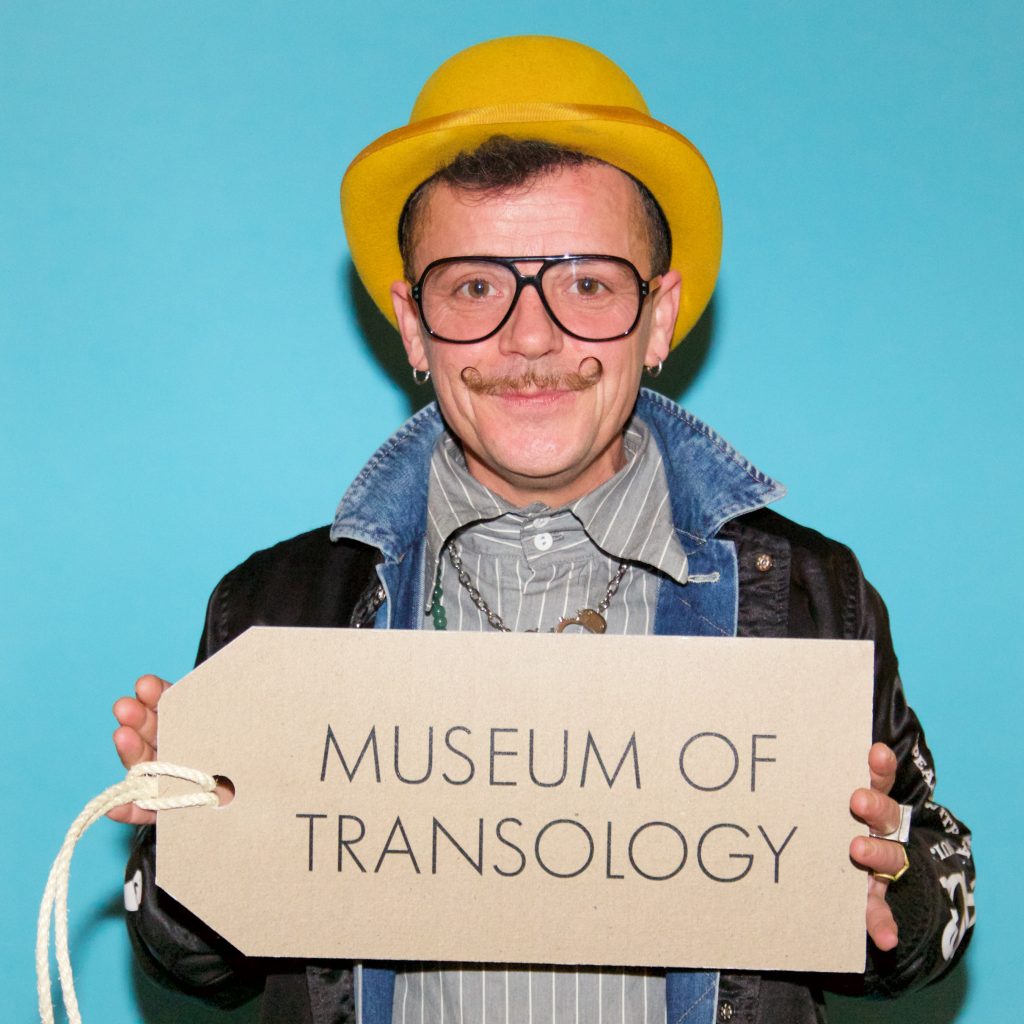THE MUSEUM
The institute claimed to have the world’s only ‘museum of sexual science’. The library, archive and collections housed here included thousands of photographs, papers, and objects such as modern contraceptives, sex toys, paintings, and ancient artefacts.
Hirschfeld wanted to document as many variations and varieties of gender and sexuality as possible, across time and place. We don’t know how much trans history featured in the museum and archive, as we have so little left of this enormous collection.
We asked E-J Scott, curator and founder of The Museum of Transology to give us his take.
Museums – E-J Scott
Professor of Cultural Destruction, Rebecca Knuth, says that books are the voices and memories of targeted people and play a central role in capturing their identities and sustaining their cultural values and uniqueness. If you eradicate a group’s book culture, you erase their potential. At the Museum of Transology, we believe that to lose our transcestry, is to lose both our sense of self and our place in the world.
It is estimated that during the WW11 (1933 – 1945) holocaust, the Nazis burnt 10 million books to eradicate principles that conflicted with fascism. The ‘Burning of the Books’ was often led by university students who destroyed campus libraries in order to align arts and culture with Nazi ideals (Gleichschaltung). The massive public bonfires were accompanied by bands playing parade music and drew large crowds. In an act of national ceremonial importance, the very first archive to be burned was the Institut für Sexualwissenschaft’s. It’s thought to have contained more than 20, 000 books and objects tracing the history of sex and gender across cultures, as well as potentially holding patients’ records and doctors’ observations. The archive’s destruction proves the eradicating genderqueer culture to have been of the highest priority for the Third Reich and aligned with racial cleansing.
The modern LGB community’s aggrandisement of this facility is understandable: the establishment instigated new approaches to studying the behaviour of homosexual and trans people beyond a framework of irredeemable criminalisation. Co-founder Magnus Hirschfeld was at the helm of an ideological shift away from a Christian bourgeois moralisation of sex and gender towards social advocacy based on scientific findings. His theories proposed there to be a spectrum of human sexuality, within which he entwined gender variance, coining the term “transvestite” in 1910. Often credited as inspiring the Gay Rights Movement, he co-founded the Wissenschaftlich-humanitäres Komitee (also referred to as the Scientific Humanitarian Committee) in 1897, an organisation aimed at abolishing Germany’s anti-gay laws.
Less frequently reported, is the lasting impact of Hirschfeld’s membership of the extreme right organisation: Gesellschaft für Rassenhygiene (the German Society for Racial Hygiene) and his co-founding of the Medical Society for Sexology and Eugenics in 1913. A committed eugenicist, his practice was entrenched in Social Darwinism. Despite being anti-racist, Hirschfeld’s thinking on gender variance was nonetheless, manifestly informed by a white, able-bodied, middle-class citizenship that defined (and protected) gender normality. Pathologising transness, Hirschfeld introduced ‘transvestism’ into the classification of psychiatric disability and developmental delay. Just as a healthy citizen makes for a healthy nation, so too a weak citizen makes for a weak nation. Thus, Hirschfeld advocated for the sterilisation of trans people and for the control of their right to marry in order to stymy their ability to breed, averting the possibility of the next generation inheriting ‘defective’ trans genes. To this day, full citizenship is rarely afforded to trans and intersex people. Instead, an eradication of transness remains the mode of patriotism. From Japan to Finland, trans people are still forcibly sterilized. The way Hirschfeld’s sexology was informed by eugenicism lingers with the ‘diagnosis’ of transness.
I strongly dispute the idea that Hirschfeld was an early queer cultural messiah and that the Institut für Sexualwissenschaft’s was a safe and joyous place of empowerment for trans patients that stimulated the historical path to trans liberation. Burning its archive has robbed us of trans voices that could have exposed the lived reality of being a patient in the facility, including why donating oneself to grossly intrusive (often fatal) medical experimentation was one’s best hope in life. This loss has also erased the role the facility played in the development of the gross spectacularisation of trans people, as well as the legacy of aiming to find a ‘cure’ for transness. Most devastatingly, the Institut’s work continues to not only misinform broader society’s idea about trans people, but our ideas about ourselves. The proliferation of trans groups on social media whose members rate their gender success according to their ability to ‘pass as cisgendered’ illustrates the role internalised transphobia plays in gender variant genocide. Brainwashing is the direct effect of overexposure to populist propaganda. The war on transness is far from over.
We must never, ever again allow trans voices to be burned out of history. Without them, we only have one side of the story of the Institut für Sexualwissenschaft’s. This is precisely why we need a Museum of Transology and why we need to protect it with our lives.

E-J Scott is a curator, academic and queer cultural producer. Their current work focusses on community-led museology that aims to disrupt the dominant narratives surrounding groups misrepresented in history. E-J founded the Museum of Transology in 2014 and continues to curate the growing collection. Find out how you can donate an object and story at museumoftransology.com
